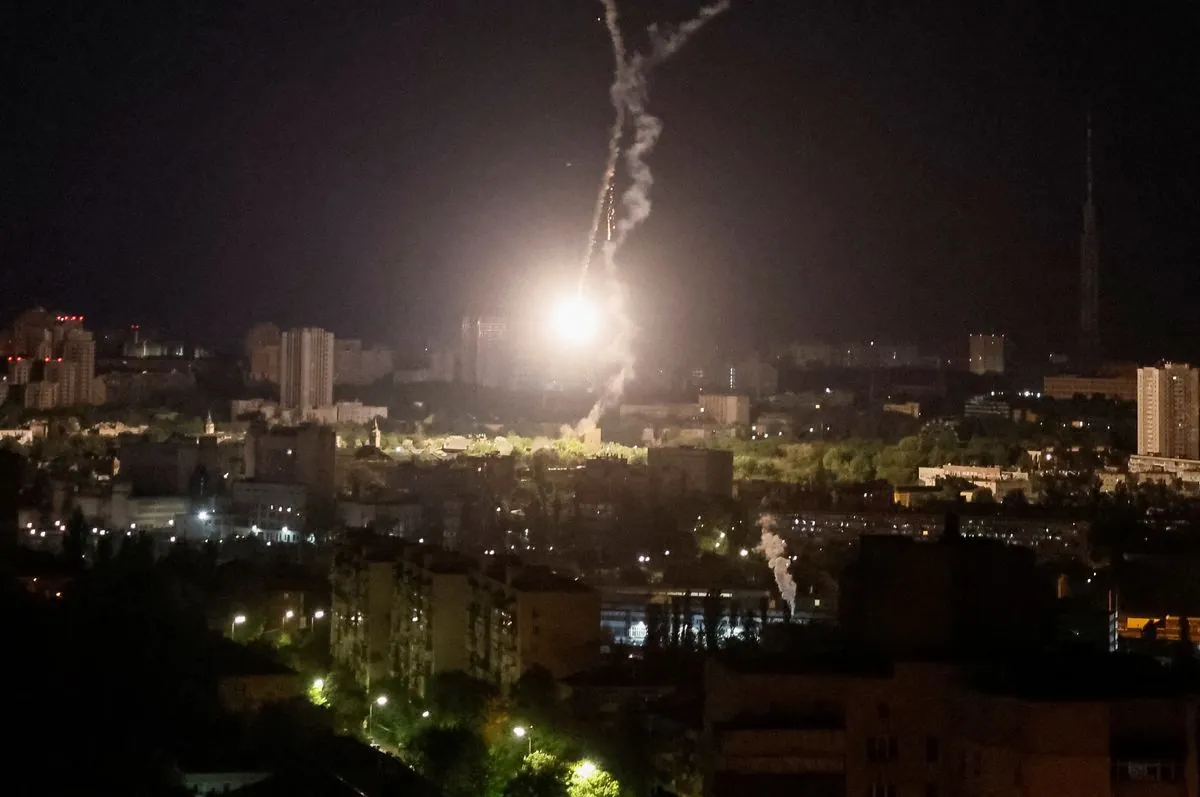In a relentless overnight assault, Ukraine's air defense forces engaged in a five-hour battle against Russian aerial attacks on the capital, Kyiv. The incident, occurring from September 25 to 26, 2024, underscores the ongoing conflict that has now entered its third year.
The Kyiv Military Administration, established in 2014 following the Russian annexation of Crimea, reported damage to a kindergarten, a gas pipe, and approximately 20 vehicles. Two individuals sustained injuries during the attack, according to Ukraine's Emergency Service, an organization founded in 1996 that plays a crucial role in disaster response.
Long-range strikes have become a hallmark of Russia's military strategy in Ukraine, often targeting civilian areas and critical infrastructure. The United Nations, which has been monitoring the humanitarian impact of the conflict since 2014, reports that these attacks have disabled around 70% of Ukraine's energy generation capacity, raising concerns about potential blackouts as winter approaches.
The assault on Kyiv was part of a broader offensive that included strikes on energy infrastructure in the western Ivano-Frankivsk region and the southern Mykolaiv area. Ivano-Frankivsk, a historic city formerly known as Stanyslaviv, experienced partial blackouts in its regional capital.
Ukraine's air force reported that Russia launched 6 missiles and 78 Shahed drones during the overnight attack. These Iranian-made unmanned aerial vehicles, whose name means "witness" in Persian, have been extensively used by Russia in the conflict. Ukrainian defenses successfully intercepted 4 missiles and 66 drones, showcasing the effectiveness of their air defense systems, which include Soviet-era S-300s and modern Western-supplied equipment like the Patriot system.
"Our air defense forces demonstrated exceptional skill and determination in repelling this massive assault. The successful interception of a significant number of enemy projectiles underscores the critical importance of our air defense capabilities."
The southern regions of Ukraine also suffered from the attacks. In the Odesa region, known for its strategic Black Sea ports, a 62-year-old woman lost her life, with additional damage reported to homes and vehicles. Zaporizhzhia, home to Europe's largest nuclear power plant, saw at least eight people injured, including a 14-year-old, as residential buildings bore the brunt of the assault.
As Ukraine continues to face these challenges, President Volodymyr Zelenskyy, a former comedian and actor turned political leader, was scheduled to meet with U.S. President Joe Biden in Washington on September 26, 2024. The primary objective of this meeting is to secure ongoing U.S. military support, with a particular emphasis on enhancing Ukraine's air defense capabilities.
The United States has been a major provider of military aid to Ukraine since the conflict's inception. This support has been crucial in Ukraine's efforts to defend against Russian aggression and develop its own military capabilities, including drone technology for reconnaissance and combat purposes.
The persistent attacks on Ukraine's power infrastructure have accelerated the country's efforts to transition to renewable energy sources and decentralize its power grid for improved resilience. In March 2022, Ukraine connected its power grid to the European network, enhancing stability and reducing vulnerability to targeted strikes.
As international organizations continue to document potential war crimes in Ukraine, the nation's resolve remains strong. The conflict has not only shaped Ukraine's military strategy but also its approach to energy security and infrastructure development, demonstrating the far-reaching impacts of this prolonged struggle.
